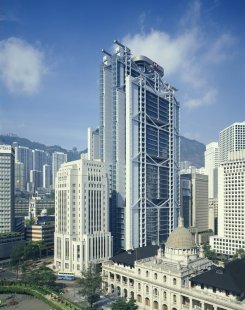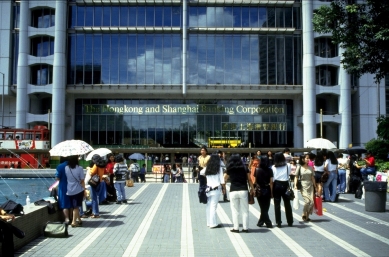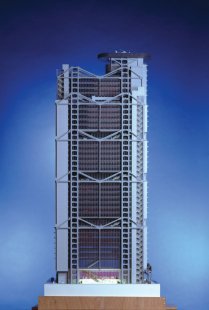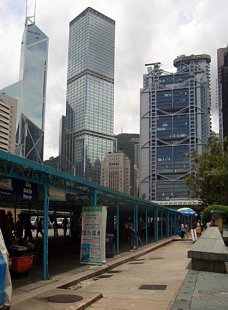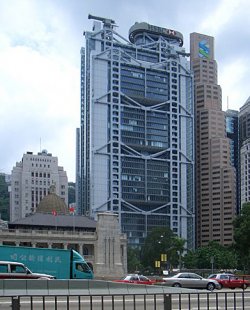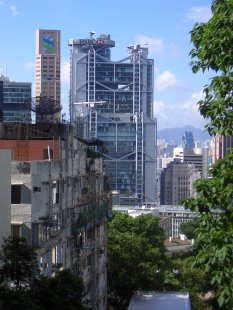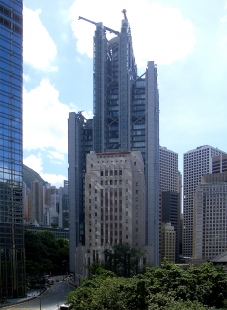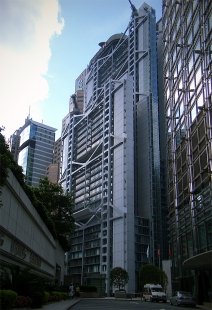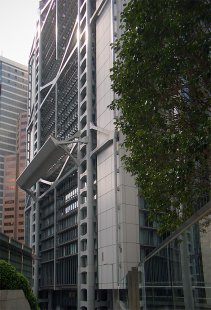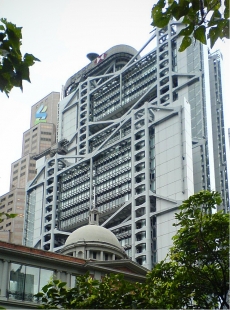
Hong Kong & Shanghai Banking Corporation

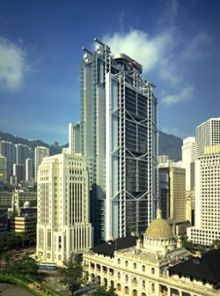 |
The competing Norman Foster was 44 years old at the time, and the HSBC building was his first skyscraper in his portfolio. Nevertheless, or perhaps precisely because of this, he managed to create an unprecedented high-rise building that fully reflects his constructivist zeal. Together with engineers from Ove Arup, he designed a bold manifest of high-tech architecture on Hong Kong Island.
The absolutely unique treatment of all the construction elements, which needed to be verified on many models, contributed to raising the bar for financial construction, and HSBC became truly the most expensive building in the world. The unique structural system of the central superstructure, consisting of eight pairs of cylindrical mega-columns located at the eastern and western ends of the building, in combination with the suspended ceilings, allowed for flexibility with the spatial requirements placed on the construction site. Each part of the building was a prefabricate that was manufactured, transported, and installed only at the construction site. As Norman Foster often says: "We built that house in white coats." The high-tech taken to extreme forms is also evoked in the shape of the façade, reminiscent of an enlarged microprocessor. The solution for the entrance to the banking hall somewhat comes from the realm of sci-fi. Two long escalators intersect a thin ephemeral membrane leading into the banking hall, which matches the proportions of Gothic cathedrals.
Norman Foster undoubtedly created the best example of global high-tech architecture in Hong Kong, with unique support from the investor. The only motif recalling the symbolism of Hong Kong & Shanghai Bank is two lion sculptures at the entrance to the building, which it is customary to touch for luck before financial transactions.
HSBC is also an amazing example of the fusion of modern technology and traditional Chinese feng shui. One of the investor's conditions was, among other things, to allow for the unobstructed flying of a kite on the ground floor of the building, which Foster cleverly managed design-wise.
Thanks to Lukáš Havlíček for the impressions.
The English translation is powered by AI tool. Switch to Czech to view the original text source.
0 comments
add comment


